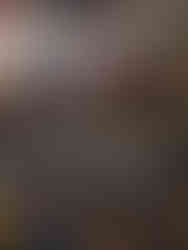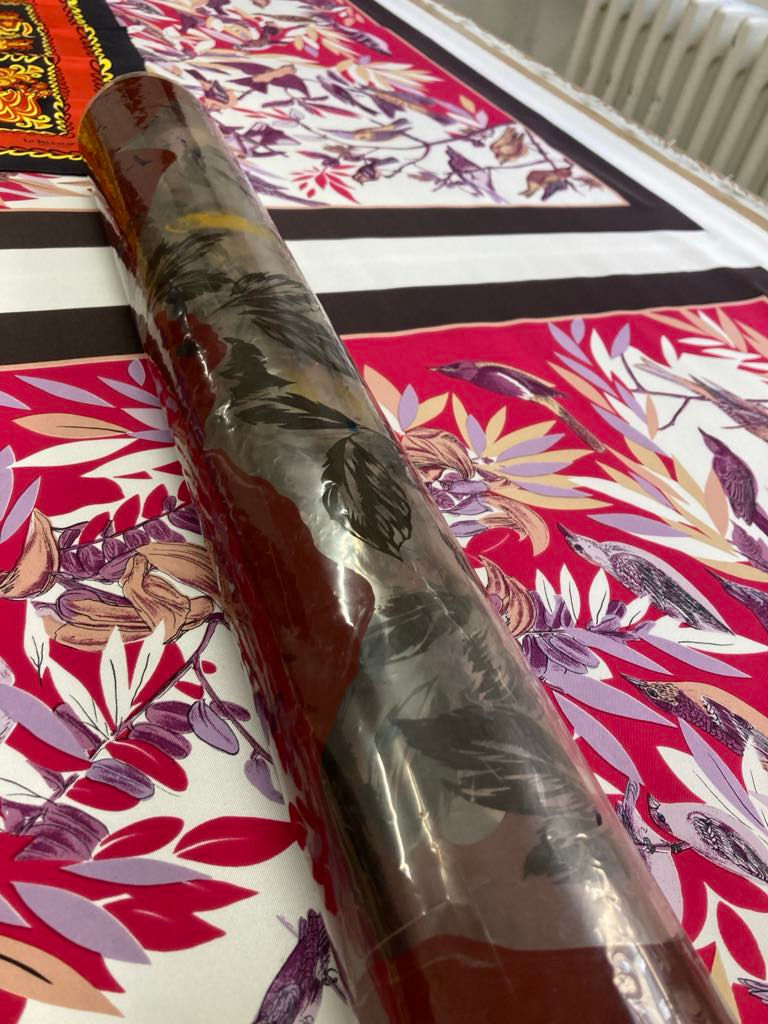The participants' blogs - Textile Trip to Lyon, France
- CTR
- Mar 12, 2020
- 6 min read
Musée des Tissus - by Ellen Warring
On Sunday it was time to visit one of the world’s largest textile museums, Musée des Tissus. The museum is placed in a wonderful palace in the northern part of Lyon. At the museum we were met by Leslie Fonladosa, American born and married to a Frenchman. Our first visit was to the Yves Saint Laurent exhibition. Yves Saint Laurent, who was born in Algeria 1936, started already as a boy to cut out dresses from his mother’s magazines for his paper dolls.

In Paris he worked at Dior, before starting his own haute couture firm in 1961. He always said that the material was the most important, the quality of the silk, chiffon or taffeta. In an haute couture firm you twice a year make at least 50 creations. In the exhibition we saw creations mostly from 1980-1995. The exhibition made you want to touch, to feel the materials, but that was of course not possible. Therefore it was lovely that Leslie brought swatches with her that we could touch. On widescreen we could see the presentations on the cat walk, and we were all shocked to see the very skinny models. Fortunately this has changed after 2000. Incidentally, Yves Saint Laurent was the first haute couture designer, who used not white models. Today accessories is what enables haute couture to survive.
As we unfortunately had no time to see the whole museum we, apart from the exhibition, chose to see textiles from the 1800th and 1900th century. There were lovely dresses and textiles from the French court and exquisite early designed silks. Unfortunately, some textiles were not exhibited, and the museum as a whole was a little old-fashioned. One could think of better presentations of an altogether fantastic collection.
Musée d'Art et d'Industrie - by Ulrikka Mokdad
On Monday 9th of March, we visited the Musée d’Art et d’Industrie in Saint-Etienne, a town located c. 55 km southwest of Lyon. From the 17th century Saint-Etienne was a center for the manufacture of ribbons and passementerie. Though the museum is normally closed on Mondays, we were very kindly welcomed by Sylvain Besson, conservator and curator of the museum’s textile collection.
The museum has ridge collections of weapons, bicycles and woven silk bands respectively. These three different collections represent the three most important industries which have influenced the lives of the inhabitants of Saint-Etienne for the past centuries – and still do. Unfortunately, there was not enough time to enjoy neither the collection of firearms nor the exhibition of bicycles so we went directly to the rooms dedicated to the production of silk bands.
Sylvain showed us a number of very appealing drawers filled with the most lovely treasures in the shape of jacquard woven bands. Our jaws dropped more than once when confronted with the shining silk.
I believe that several individuals within the group would have loved to dedicate a couple of days/weeks/months to help Sylvain with the archive of the museum’s wonderful textile collection.
Visit at L' Atelier de Soierie, - by Ulla Lund Hansen
Traditional craft in Lyon counts – among other specialties – hand printing on silk. This craft is also called "silk screening" or printing "à la lyonnaise". Printing at silk can be made by roller printing, screen printing or painting at velvet.
However – to this come a very old way to make prints on silk. The method was demonstrated to us by one of the artist/printers of the atelier. It is probably the oldest method used for printing at silk. The method consists in the use of wooden blocks with carved designs. One can use one block (one design and one color) or one can use several blocks. When using several blocks one can create a complex design by using one block for each color. One can have up to 50 colors for a single design.

The entire collection of blocks in the atelier is carved in the 20. century, and blocks like these are not carved any more. The blocks are all local made, and the atelier has not yet tried all the blocks but is planning to do it in the future. Very fine/thin designs can be produced not by carving in tree blocks but by making the designs by mean of metal pins.
The colors used for the printing are synthetic; the gum is imported from India.
Another technique for printing at silk is Screen-printing, which also was demonstrated to us. Also this is an ancient method of printing at silk which became industrialized in Lyon around 1850 hence its name ӈ la lyonnaise". Using this technique one starts with having a white woven silk stretched out on a long table. The final design of a square piece of silk is then composed by adding different colors through frames working as stencils and by this one makes the squares progressively. Most common in this technique is the use of six to eight colors. After printing, the silk has to dry in 15 minutes and afterwards washed to get the gum out. It was also demonstrated to us how hand painting are performed at motives shaped in velvet (see photo). This technique is today only mastered in Lyon.
Finally, we were shown the printer’s workshop and his paint. He told that he worked with 20 colors, which by mixing resulted in several more colors.
Printing at silk can also be done by Roller printing, which we not saw. This technique was invented in 1785 by a Scot named Bell. The fabric is printed mechanically by passing through two rollers, which are engraved with the enquired design. This method is suited for very long runs and is not used very much for silk fabrics (scarfs and squares).
Finally we all visited the shop at the first floor displaying prints as shawls, squares, scarves etc. for sale – very tempting.
33, rue Romarin, 69001 Lyon, contact@atelierdesoierie.com
Musée de Confluences - by Lena Bjerregaard

Musée de Confluences in Lyon is a new and very modern museum built 5 years ago on the southern tip of the peninsula dividing the two rivers of the town. At the moment (June 6th 2019 - march 15th 2020) they have a spectacular exhibition of 500 ethnographic headgears. They are collected by Antonin de Galbert over the last 20 years, and come from all over the World. I estimate that most of them are from the last 50 years, but also at least one archaeological (Chancay, Peru hair net from 1.300 AD ) has found its way into the exhibition.
It was an impressive and wide ranging exhibition containing many wonderful and strange objects. The hats are very beautifully exhibited in transparent showcases - or in the open - so they can be seen from all sides. The hats are grouped not according to cultural, timely or geographical themes which ( together with very limited text information) makes it an art exhibition in stead of an ethnographic experience. This may be to the liking of some people and not to others - for me it makes it harder to remember the fantastic objects after the exhibition. Fortunately they can all be seen again on the web page of the museum. So even though you missed the show, you should allow yourself the pleasure of looking at the digital images of all the weird and beautiful objects people have put on their heads to show gender, status, ethnological belonging, festive celebrations, or just beauty on https://www.museedesconfluences.fr/fr/evenements/le-monde-en-t%C3%AAte-la-donation-antoine-de-galbert.
Saturday in Lyon - by Inge Christiansen
Saturday morning the Danish speaking guide Delphine Godefroy showed us around in the Vieux Lyon, where the silk weaving started in Lyon in the 16th century.
The architecture is very special with its many Traboules, hillside views and the river Saône nearby to transport the silk. After lunch we got the chance to visit two silk workshops own by the same family and they explained about today’s production of silk and silk scarves. We heard about the special fabric napped velvet, where two parallel layers of silk chiffon are linked together by a layer of rayon threads. The velvet is created by cutting the rayon with a sharp blade and by separating the two layers of chiffon. This black and white fabric arrives in the workshops in Lyon, where the white velvet is hand colored with paint brush. At last the colors are set by steaming the fabric in a high pressure cooker which guarantees the lasting quality and the final color. The steaming takes place outside but close to Lyon.













Comments